
They have large cylindrical spinners. Their abdomen has no clear markings and the colors range between grayish brown and black. Gnaphosids are nocturnal hunters and spend the day in a silken retreat.

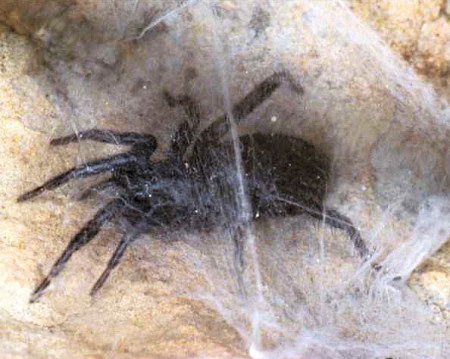
 |
|
| This family is closely related to the family Clubionidae. Forty-one species of this family are known in NW-Europe. They have large cylindrical spinners. Their abdomen has no clear markings and the colors range between grayish brown and black. Gnaphosids are nocturnal hunters and spend the day in a silken retreat.  |
 |
| The females make their thick walled egg sacs in the summer and guard it until the youngsters are born. | |
Genus Drassodes
| Several species can be found in our region. They have a hairy mouse, grey-brown abdomen and resemble some Clubiona species. However, they are easily distinguished by the long tubular spinners. Females seal themselves in silken cells with their egg sac. They are nocturnal hunters. Their size varies between 9 and 18 mm |
|
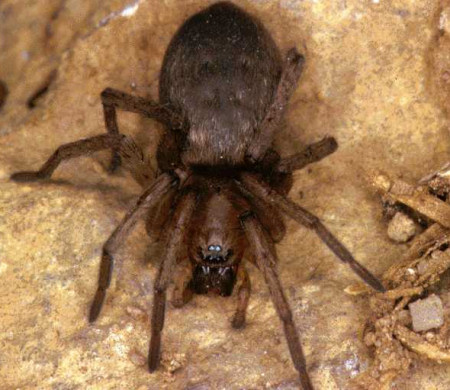 |
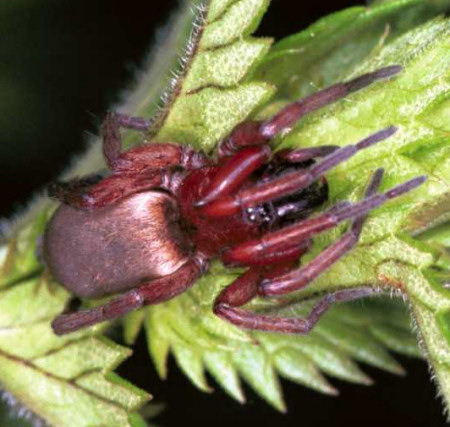 |
| Drassodes lapidosus | Drassodes lapidosus |
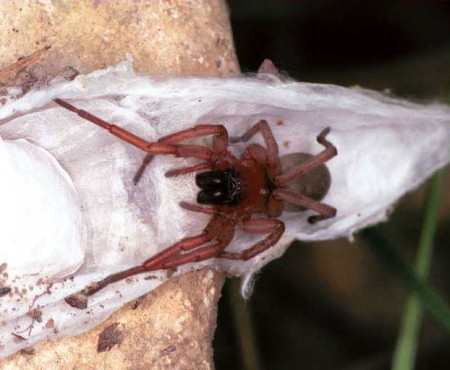 |
 |
| Drassodes lapidosus | Drassodes lapidosus |
Genus Callilepis
This beautiful ant-hunting spider can be found on dry hot places. Their size varies between 4 and 7 mm. Males have a golden shine while the females have a more silver reflection. Callilepis schuszteri is not common is our region but found in middle and southern Europe. Callilepis nocturna can be found up to Finland. The spider hunts ants in short bursts of movement during daytime in the hot sun preferable between 12h and 14h. The ants are always attacked head-on and always bitten in their antenna. After the first short bite the spider retreats for a minute and waits at the moment the ant starts running in circles. Then the spider applies a longer lasting bite. When the ant is paralysed the spider tucks the ant underneath her and start running for a hiding place while often being attacked by other ants. |
 |
| Callilepis schuszteri or nocturna |
Genus Gnaphosa
 |
|
A sturdy spider length 10 -20mm without markings and often coloured brown to black. Gnaphosa lucifuga or the similar in appearance Gnaphosa lugubris |
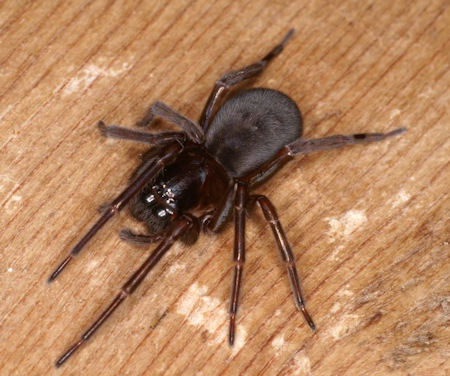 |
Genus Poecilochroa
| Two species occur in this region. Her abdomen has a clear pattern of white hairs. They can be found under stones and are frequently active in the sunshine. Their size varies between 6 and 9 mm. |
|
|
|
|
| Poecilochroa conspicua |
Poecilochroa conspicua |
Genus Nomisia
This spider with a size between 6 and 12 mm can be found at daytime predating ants on dry spots between grass and on dunes.
 |
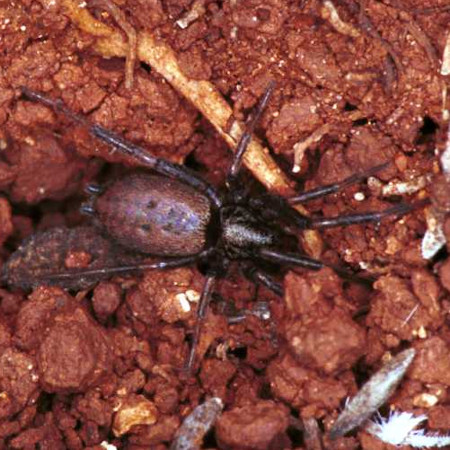 |
| Nomisia aussereri female. | Nomisia aussereri female. |
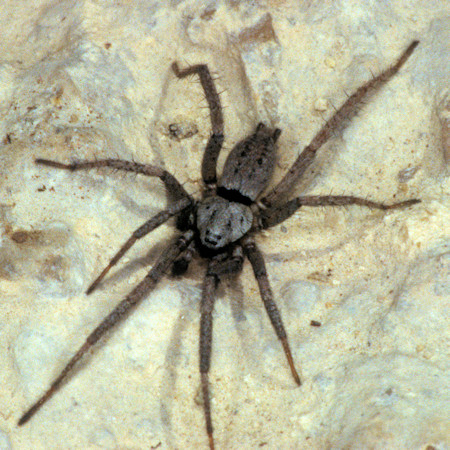 |
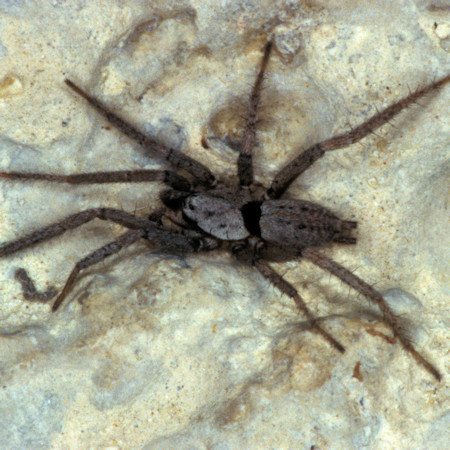 |
| Nomisia aussereri male. | Nomisia aussereri male. |
Genus Micaria
These spiders are also called ant-mimicking spiders. Fifteen species are described and their size is between 2.5 and 7 mm. |
|
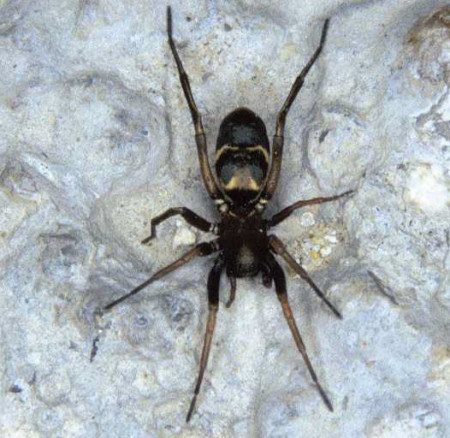 |
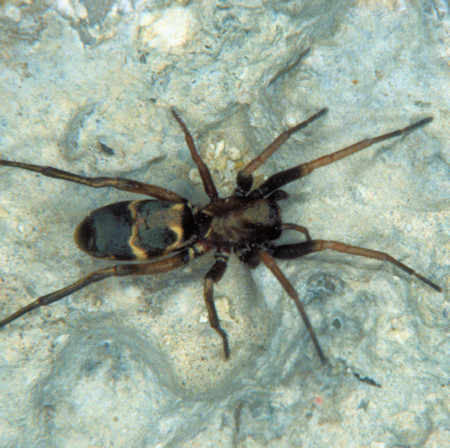 |
| Micaria romana | Micaria romana |
 |
|
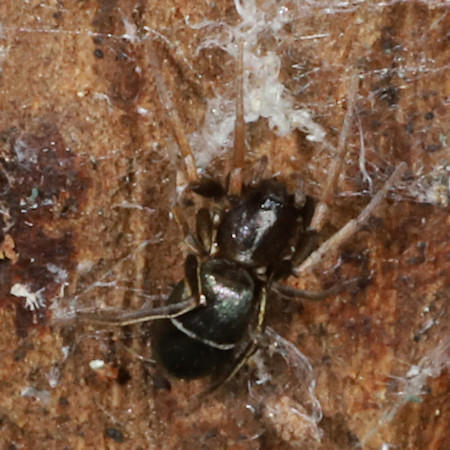 |
 |
| Micaria subopaca | Micaria subopaca |
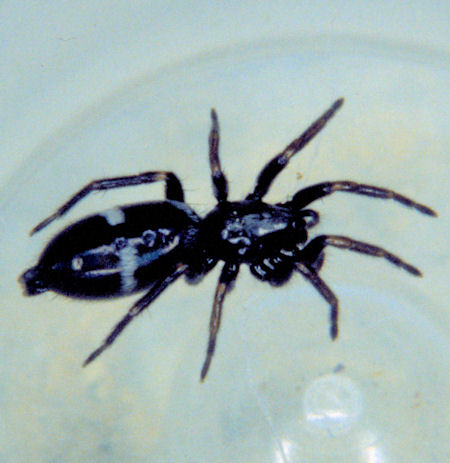 |
 |
| Micaria pulicaria juvenile? resembles Phaeocedus vankeeri | Liophrurillus flavitarsis, family Phrurolithidae. New family since 2014 |
 |
 |
| Micaria coarctata??? | Micaria coarctata??? |
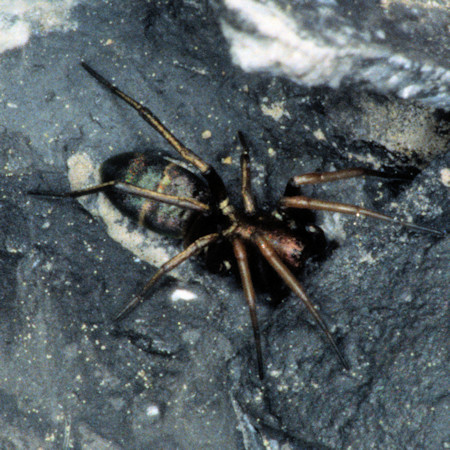 |
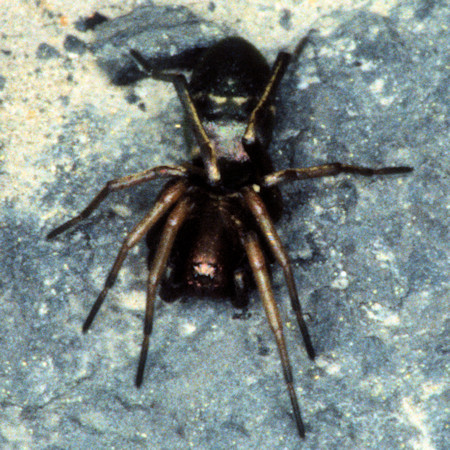 |
| Micaria albovittata | Micaria albovittata |
 Scotophaeus blackwalli |
|
| The three species (Scotophaeus blackwalli, quadripunctatus and scutulatus) in this genus are quite large (8-16 mm) and very similar in appearance. These spiders have a mousy-grey abdomen without markings. They are nocturnal wanderers and are found mainly in and around houses and under bark. They are aggressive hunters and hunt like a jumping spider. It jumps on the ambushed prey. It is one of the most efficient killers in our house but hardly seen because they do their job during the night. |
 |
 |
|
| Spinners of Scotophaeus blackwalli | Scotophaeus blackwalli |
 |
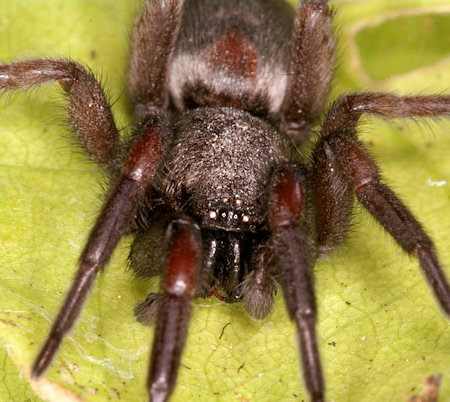 |
| Scotophaeus blackwalli guardig her eggs. Right detail of the head and below detail of a leg | |
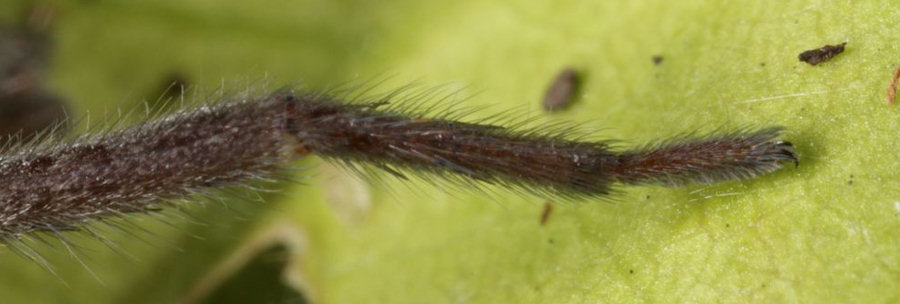 |
|
Genus Zelotus
Most spiders of this genus are black and are between 3 - 8 mm in large.
They are nocturnal hunters and can be found under stones and detritus. They make a disk shaped egg sac that is white or pink of color.
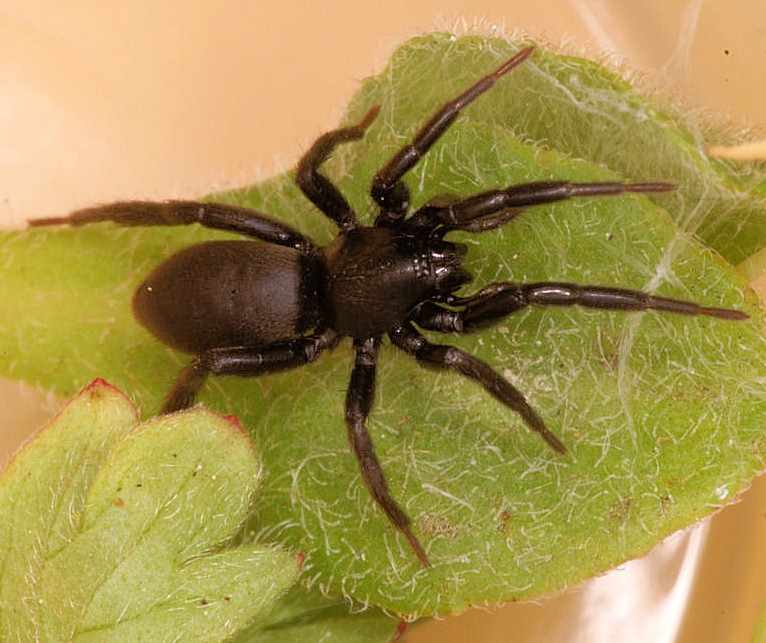 |
|
| Zelotes pusillus | |
|
|
|
| Zelotes praeficus |
Zelotes praeficus |
|
|
|
| Zelotus pedestris |
Zelotes pusillus |
 |
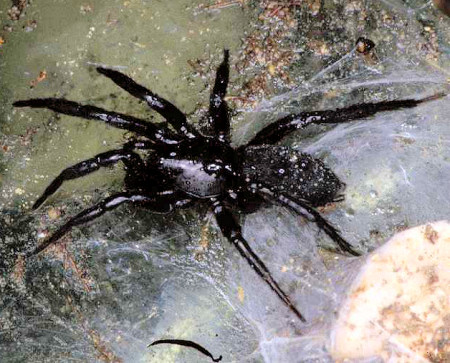 |
| Zelotes latreillei | Zelotes latreillei |
Ed Nieuwenhuys, 20 October 2020
20 October 2011, 5 September 2011,
7 August 2011 ,
7 May 2010,
March 13, 2000